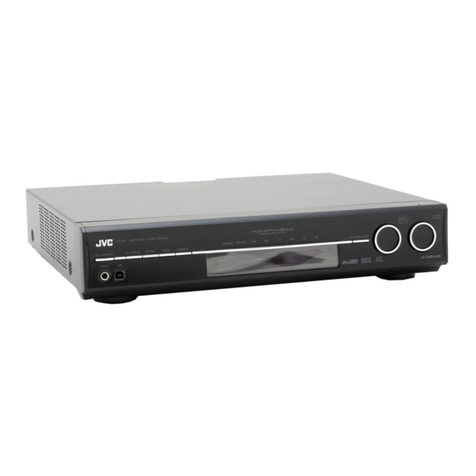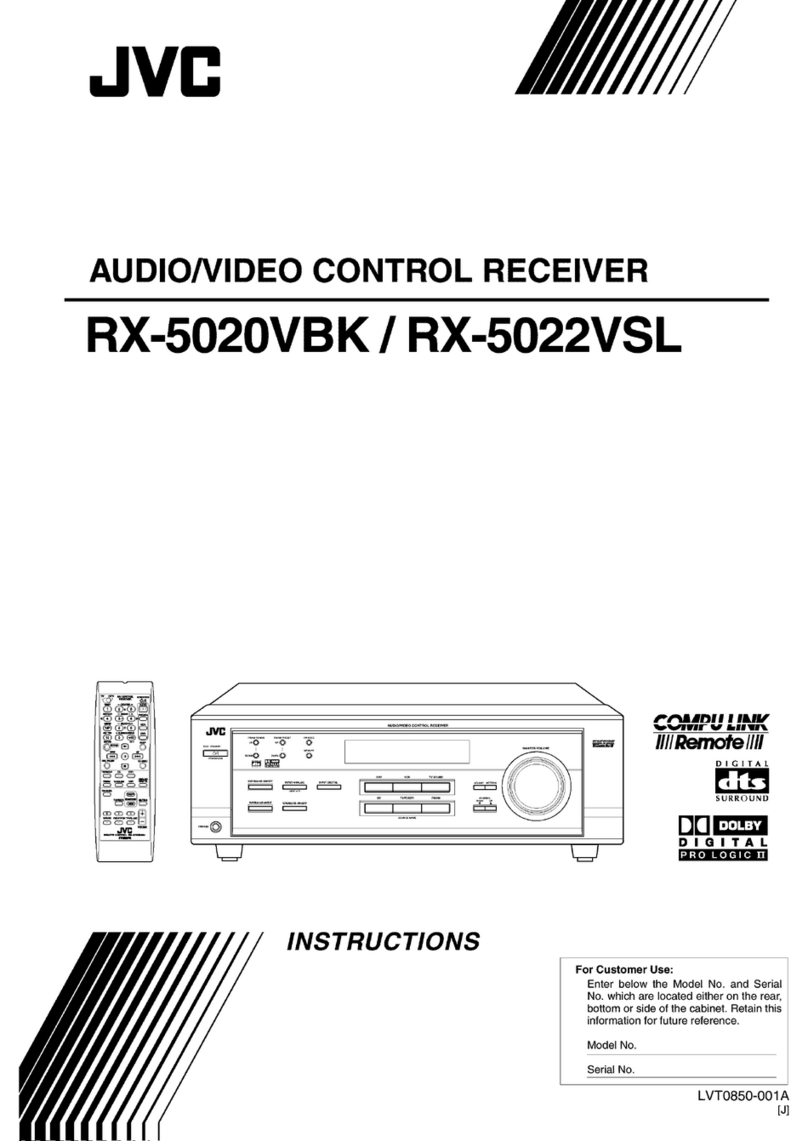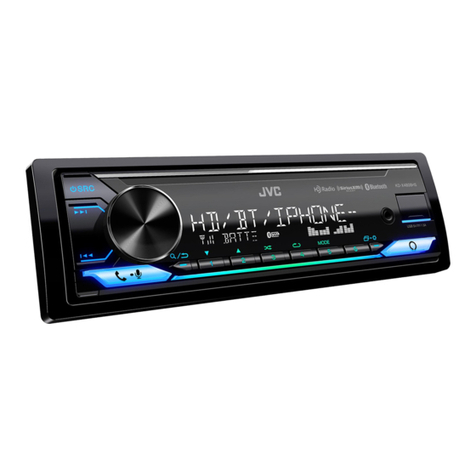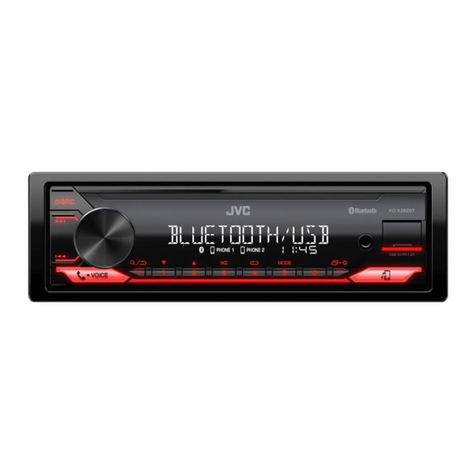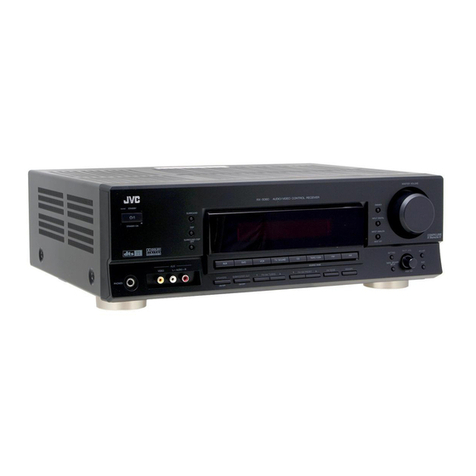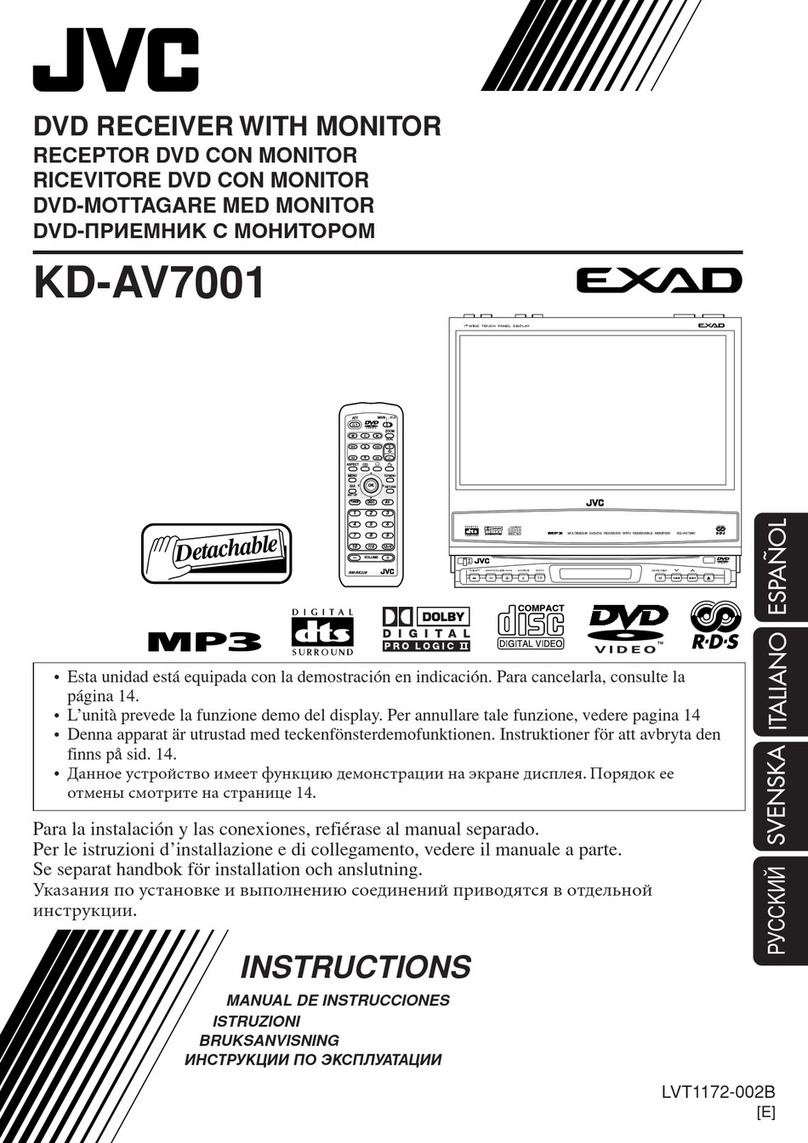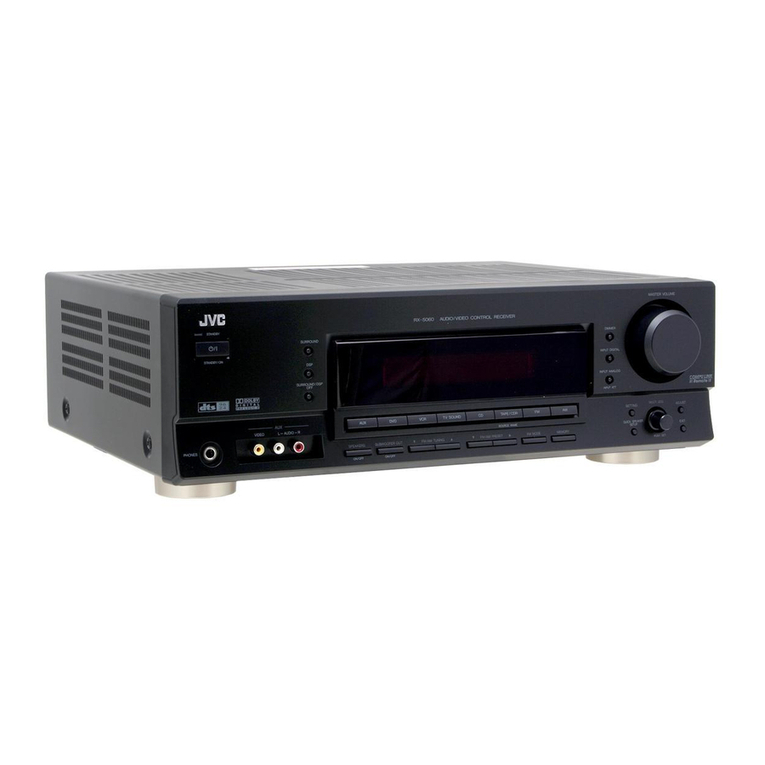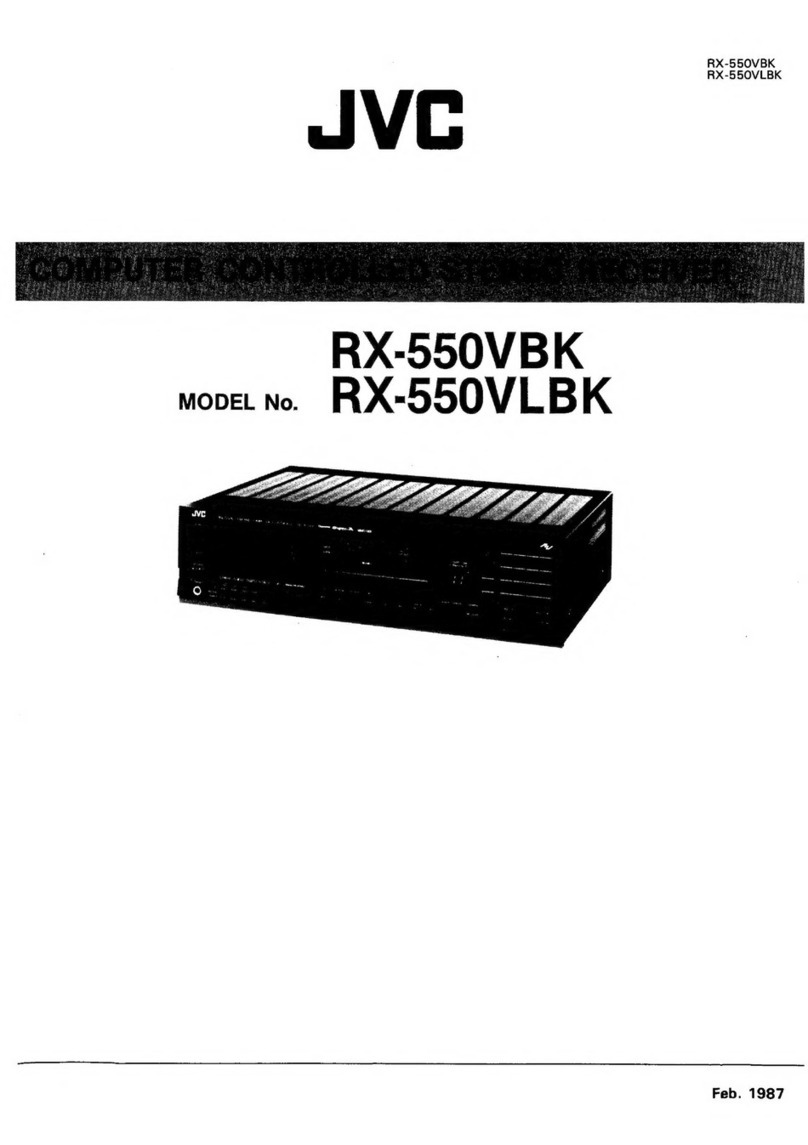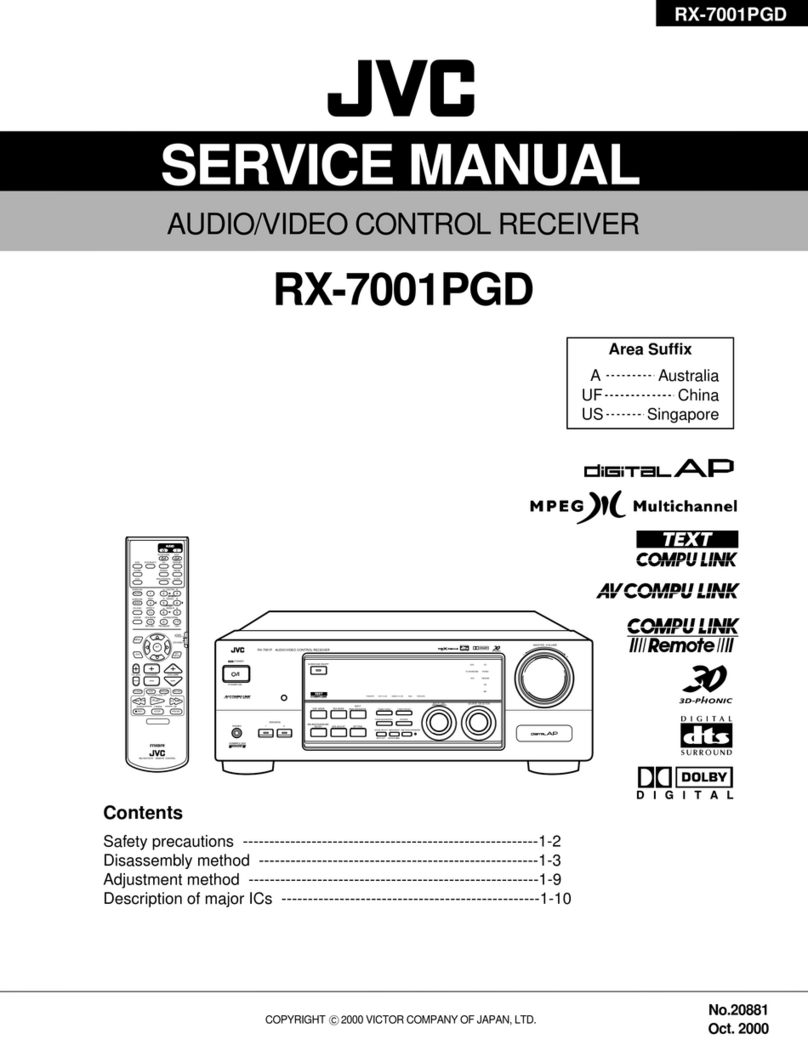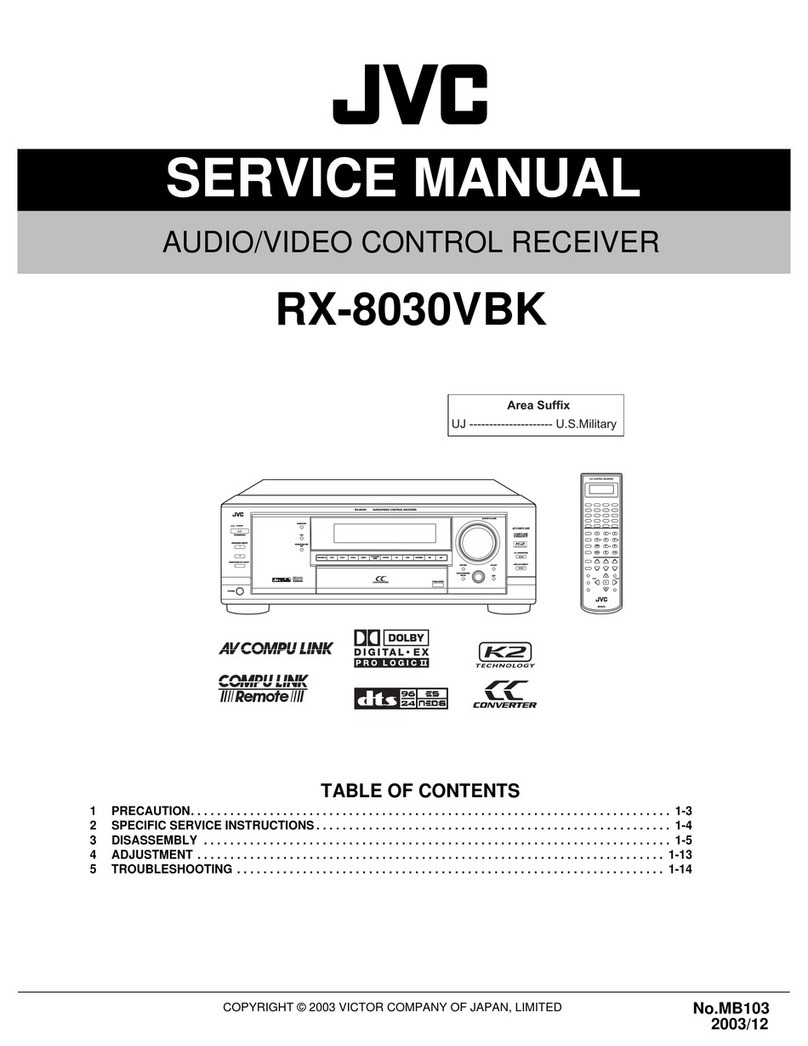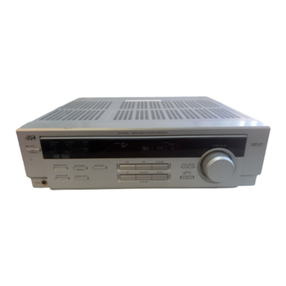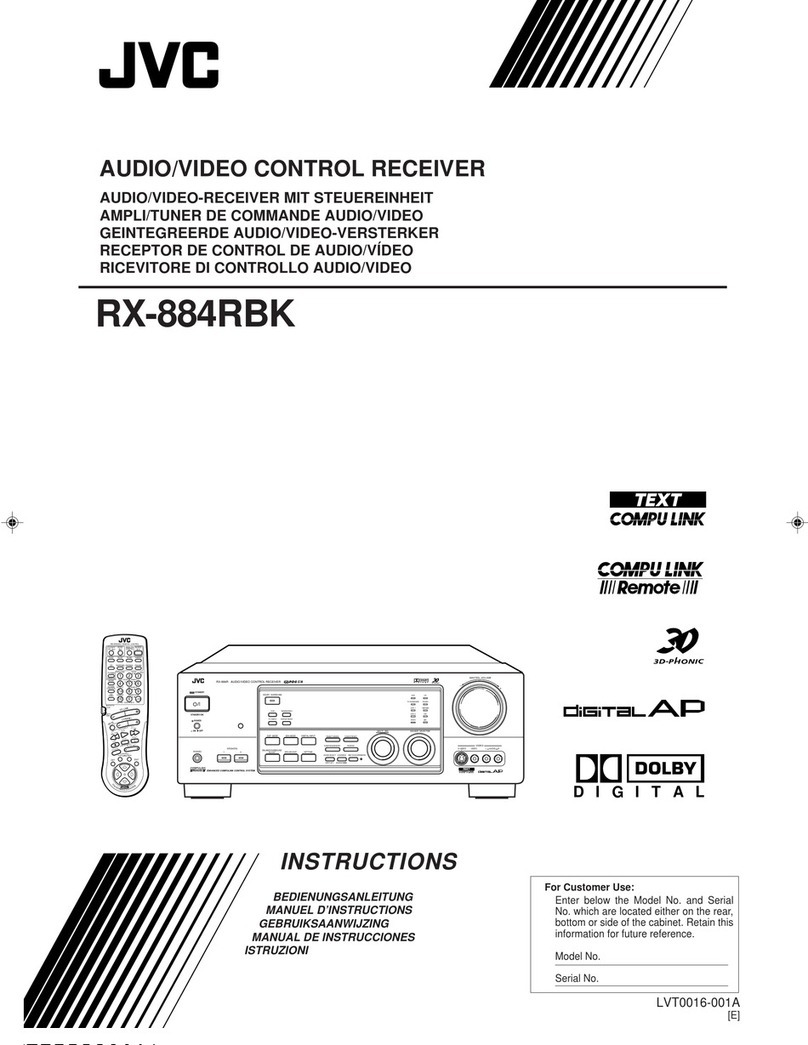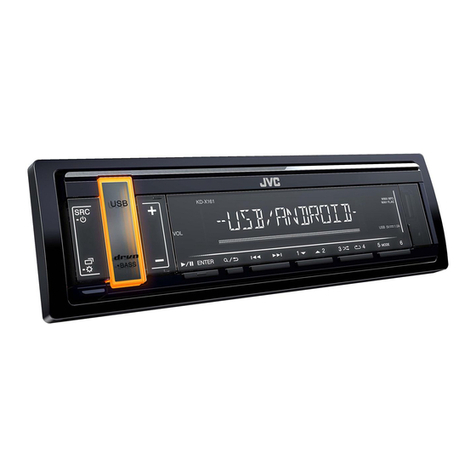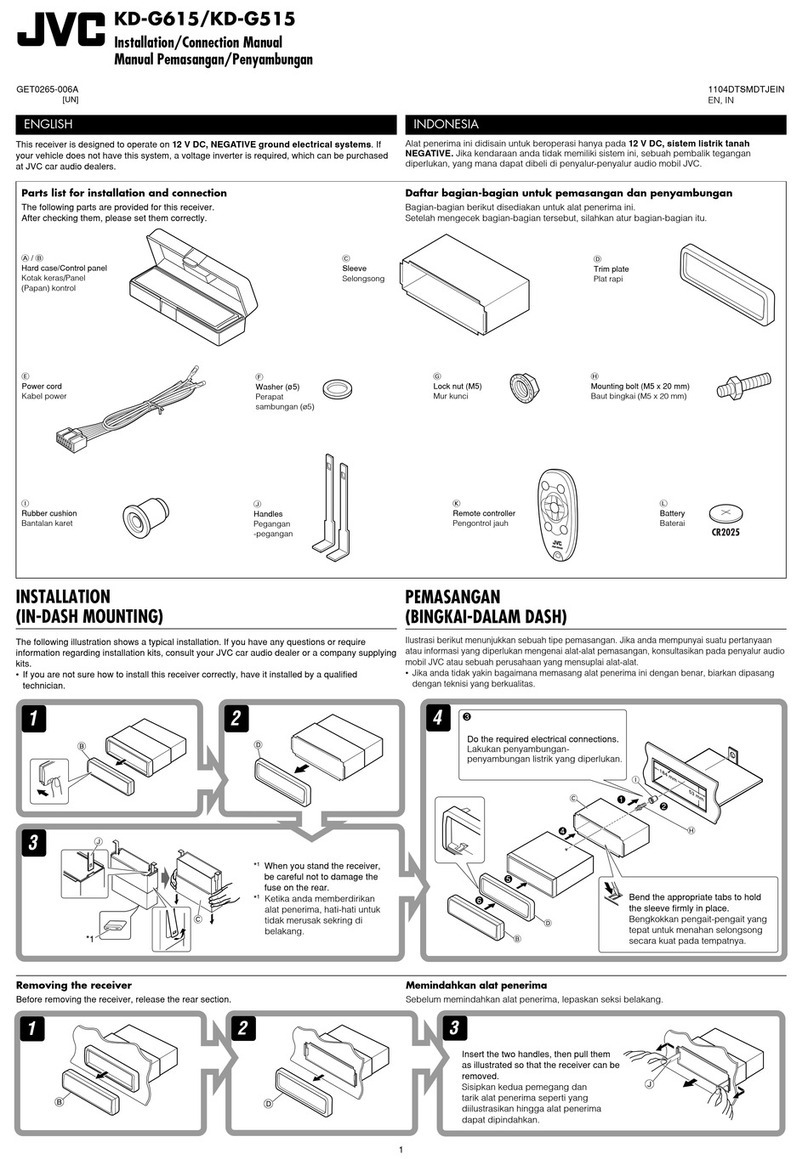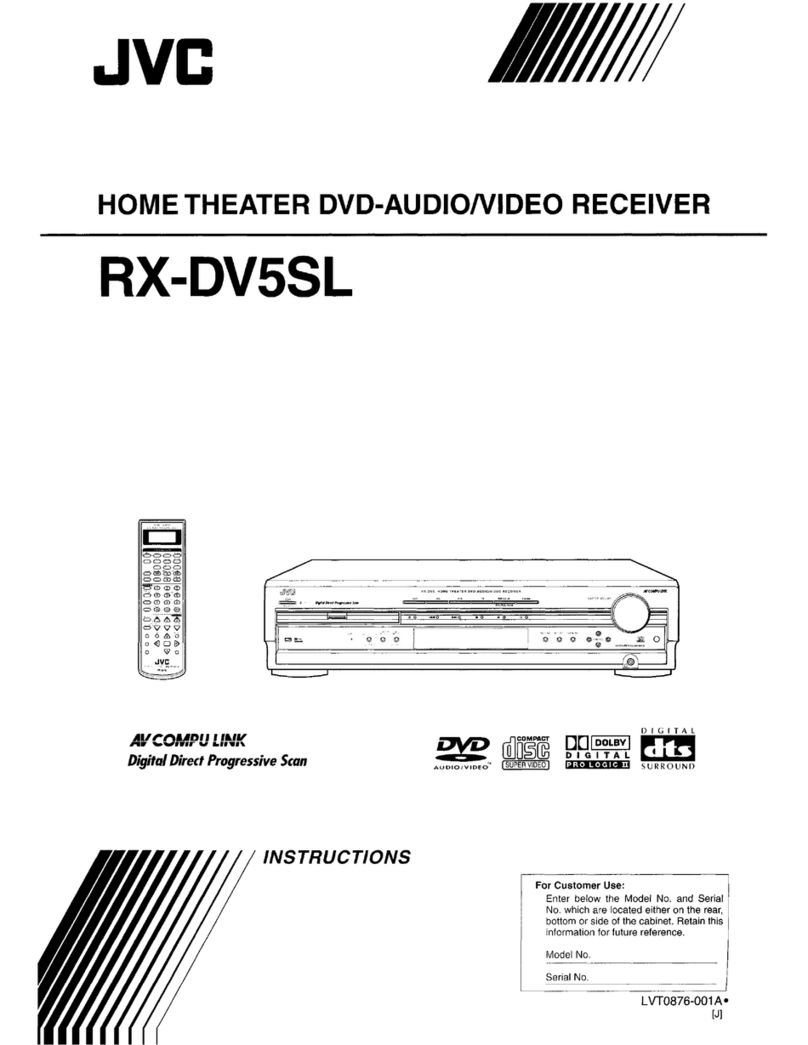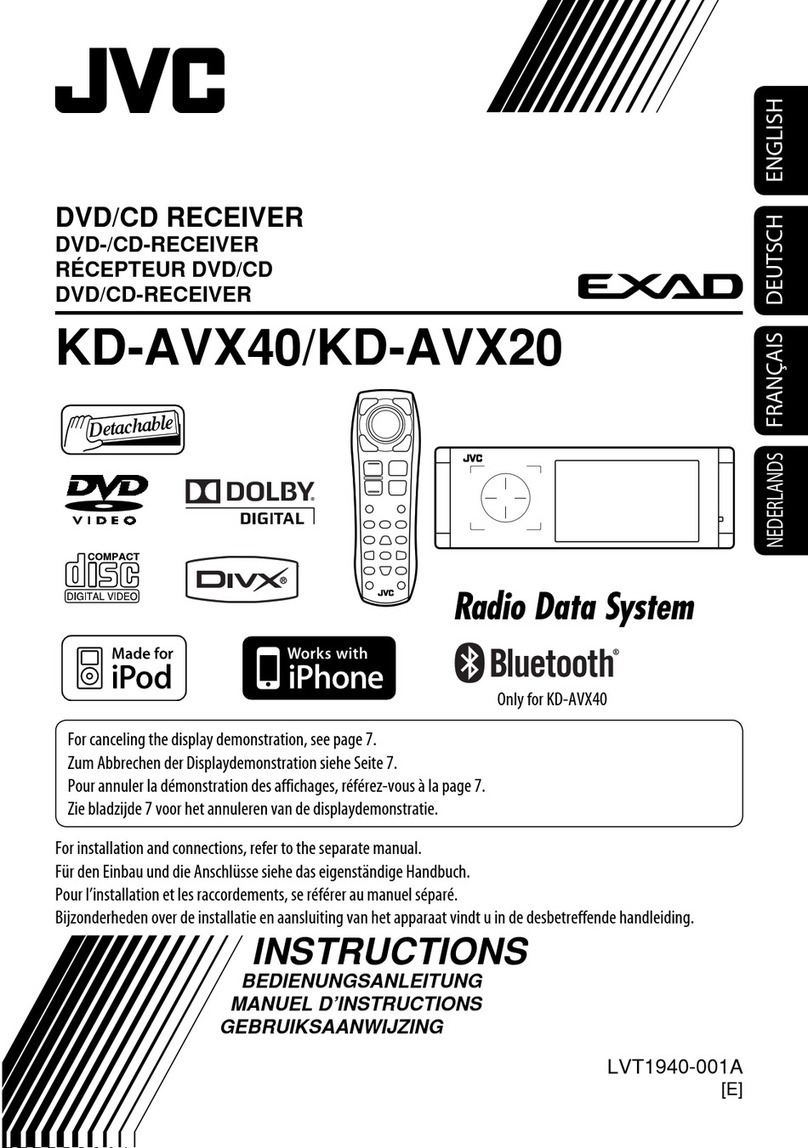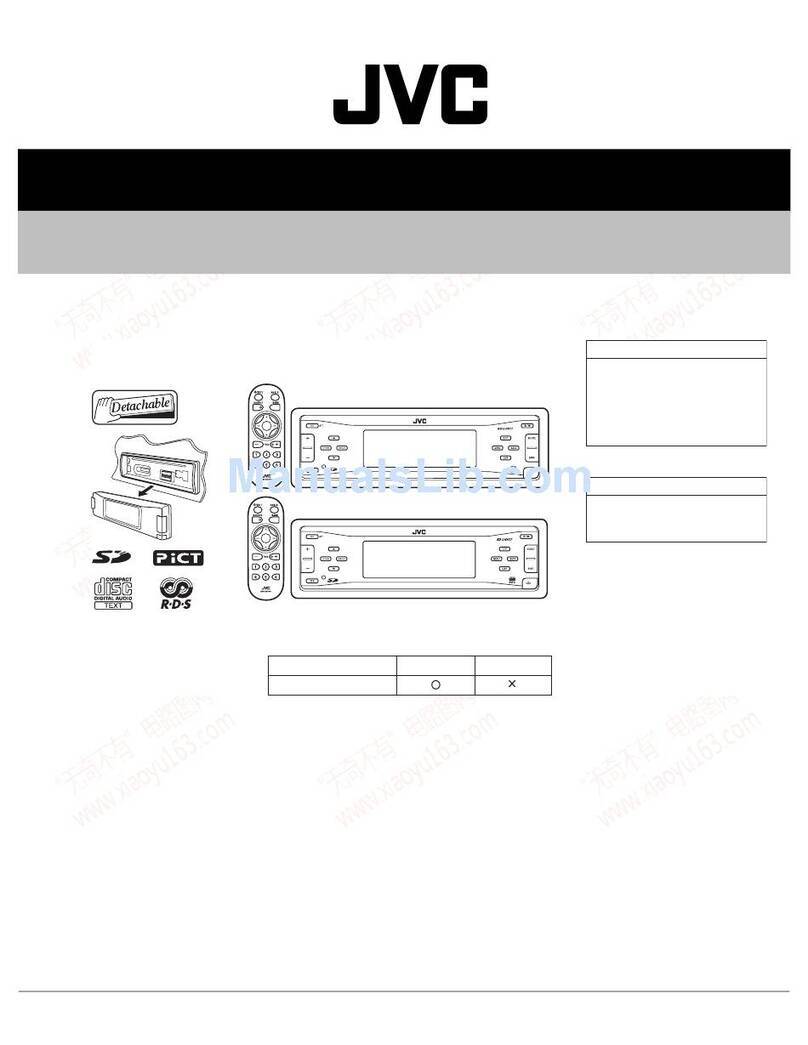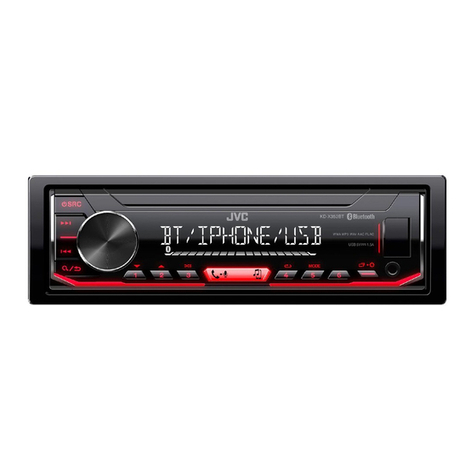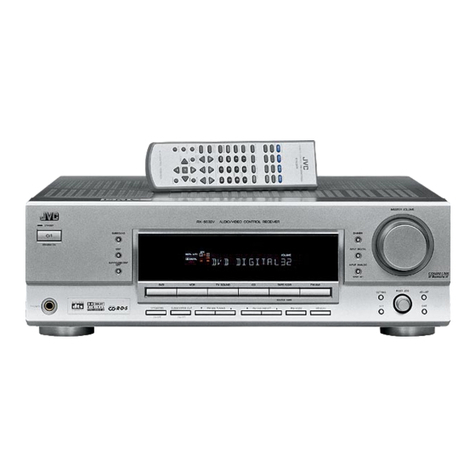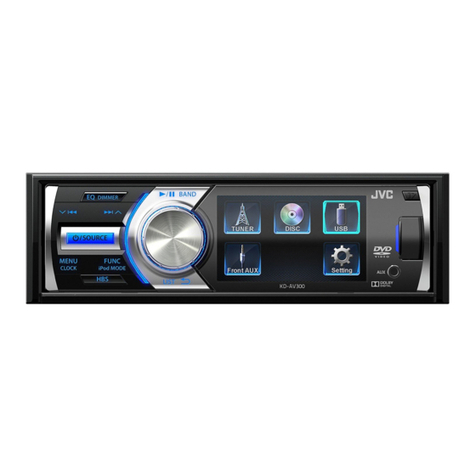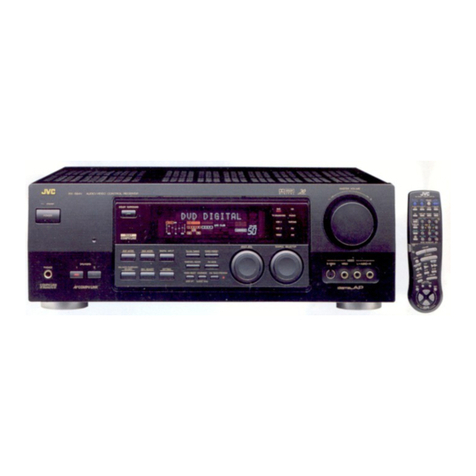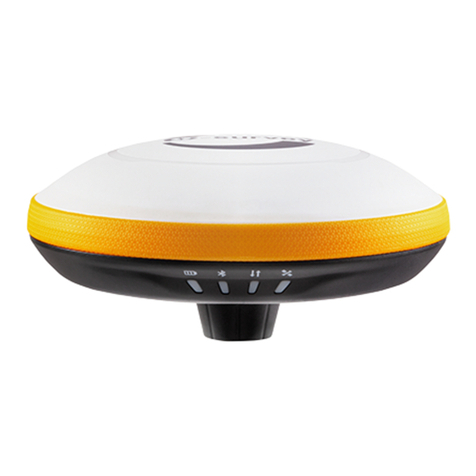
1-2 (No.MA473<Rev.002>)
SPECIFICATION
* Only for KW-AVX838/KW-AVX830.
Design and specifications are subject to change without notice.
KW-AVX838/KW-AVX830/KW-ADV793/KW-AVX738/KW-AVX730 J/JW
AMPLIFIER
Power Output 20 W RMS ×4 Channels at 4 Ωand < = 1% THD+N
Signal-to-Noise Ratio 80 dBA (reference: 1 W into 4 Ω)
Load Impedance 4 Ω(4 Ωto 8 Ωallowance)
Equalizer Control Range Frequencies Low: 60 Hz, 80 Hz, 100 Hz, 200 Hz
Mid: 500 Hz, 1 kHz, 1.5 kHz, 2.5 kHz
High: 10 kHz, 12.5 kHz, 15 kHz, 17.5 kHz
Level ±12 dB
Audio Output Level
FRONT OUT, REAR OUT, SUBWOOFER OUT
Line-Out Level/Impedance 5 V/20 kΩload (full scale), 2.5 V20 kΩload (full scale) for KW-AVX730
Output Impedance 1 kΩ
Color System NTSC
Video Output (composite) 1 Vp-p/75 Ω
Other Terminals Input LINE IN, VIDEO IN, CAMERA IN, USB input, MIC IN*, Antenna input
Output 2nd AUDIO OUT*
Others Expansion port, OE REMOTE
FM/AM TUNER
Frequency Range FM with channel interval set to 100 kHz or 200 kHz 87.5 MHz to 107.9 MHz
with channel interval set to 50 kHz 87.5 MHz to 108.0 MHz
AM with channel interval set to 10 kHz 530 kHz to 1 710 kHz
with channel interval set to 9 kHz 531 kHz to 1 602 kHz
FM Tuner Usable Sensitivity 9.3 dBf (0.8 µV/75 Ω)
50 dB Quieting Sensitivity 16.3 dBf (1.8 µV/75 Ω)
Alternate Channel Selectivity (400 kHz) 65 dB
Frequency Response 40 Hz to 15 000 Hz
Stereo Separation 40 dB
AM Tuner Sensitivity/Selectivity 20 µV/40 dB
DVD/CD
Signal Detection System Non-contact optical pickup (semiconductor laser)
Frequency Response DVD, fs=48 kHz/96 kHz 16 Hz to 22 000 Hz
VCD/CD 16 Hz to 20 000 Hz
Dynamic Range 93 dB
Signal-to-Noise Ratio 95 dB
Wow and Flutter Less than measurable limit
USB
USB Standards USB 2.0 Full Speed
Data Transfer Rate Full Speed Maximum 12 Mbps
Low Speed Maximum 1.5 Mbps
Compatible Device Mass storage class
Compatible File System FAT 32/16/12
Max. Current DC 5 V 500 mA
BLUETOOTH (Only for KW-AVX838/KW-AVX830)
Version Bluetooth 2.0 certified
Output Power +4 dBm Max. (Power class 2)
Service Area Within 10 m (10.9 yd)
Profile HFP (Hands-Free Profile) 1.5
OPP (Object Push Profile) 1.1
A2DP (Advanced Audio Distribution Profile) 1.2
AVRCP (Audio/Video Remote Control Profile) 1.3
MONITOR
Screen Size 7 inch wide liquid crystal display
Number of Pixel 336 960 pixels: 480 ×3 (horizontal) ×234 (vertical)
Drive Method TFT (Thin Film Transistor) active matrix format
Color System NTSC/PAL
Aspect Ratio 16:9 (wide)
GENERAL
Power Requirement Operating Voltage DC 14.4 V (11 V to 16 V allowance)
Grounding System Negative ground
Allowable Storage Temperature -10°C to +60°C (14°F to 140°F)
Allowable Operating Temperature 0°C to +40°C (32°F to 104°F)
Dimensions (W ×H ×D) Installation Size (approx.) 182 mm ×111 mm ×160 mm (7-3/16” ×4-3/8” ×6-5/16”)
Panel Size (approx.) 188 mm ×117 mm ×10 mm (7-7/16” ×4-5/8” ×7/16”)
Mass (approx.) 2.8 kg (6.2 lbs) (including the Trim plate and Sleeve)
